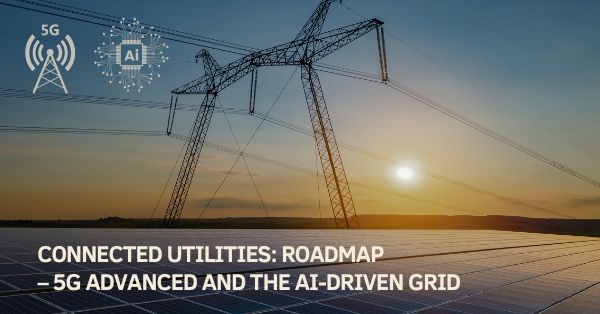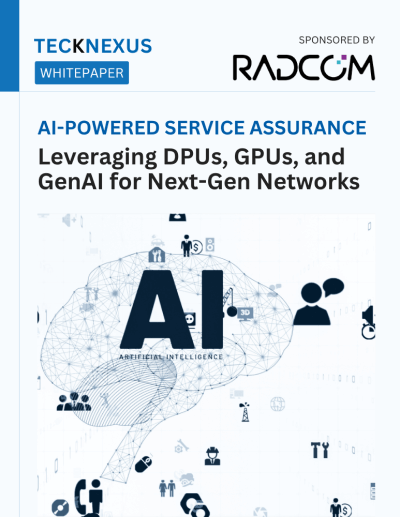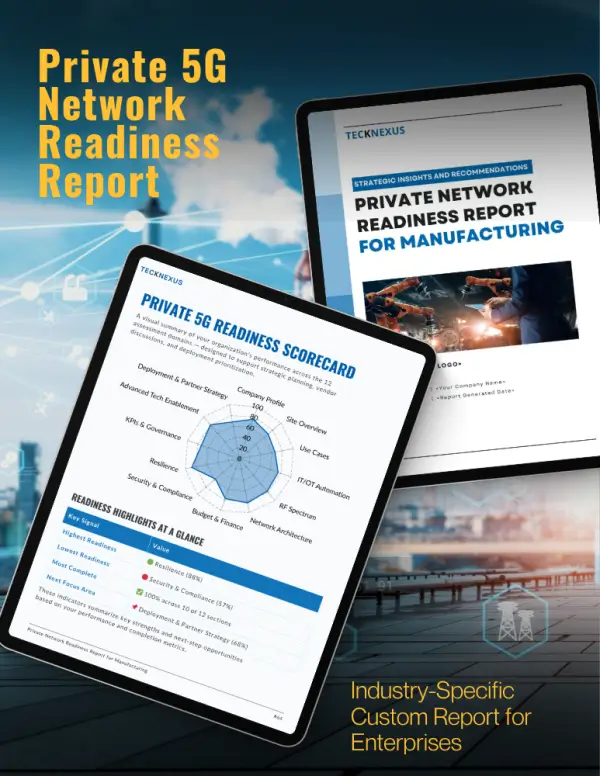The AI landscape in 2025 is evolving rapidly, with AI agents at the forefront of automation, decision-making, and autonomous actions. However, scaling these AI agents efficiently requires a deep understanding of Large Language Models (LLMs). These models provide the reasoning, knowledge retrieval, and contextual understanding needed for AI agents to function effectively.
How LLMs Power AI Agents: The Foundation of Scalable AI
AI agents are designed to automate tasks, analyze information, and make decisions across various industries. However, without Large Language Models (LLMs), these agents struggle with understanding complex inputs, retrieving relevant knowledge, and adapting to dynamic environments. LLMs act as the core intelligence behind AI agents, enabling them to process information more effectively and execute tasks with greater accuracy.
Generative AI & RAG: Essential Foundations for AI Agents
Before diving into AI agents, it’s crucial to build a strong foundation in Generative AI (GenAI), Large Language Models (LLMs), and Retrieval-Augmented Generation (RAG).
1. GenAI Introduction
| Key Concept | Description |
|---|---|
| What is Generative AI? | Generative AI refers to artificial intelligence systems that create new content, such as text, images, audio, and even code, rather than simply analyzing or categorizing existing data. Unlike traditional AI, which focuses on structured tasks like classification or prediction, Generative AI learns from large datasets to generate human-like responses, artistic images, or even realistic voice synthesis. Its applications range from chatbots and content creation to scientific simulations and drug discovery. |
| Popular GenAI Models | Several influential models define the landscape of Generative AI. GPT (Generative Pre-trained Transformer) excels at text-based applications, generating coherent and contextually relevant responses in chatbots and writing assistants. BERT (Bidirectional Encoder Representations from Transformers) enhances language understanding by considering the full context of words in a sentence. T5 (Text-to-Text Transfer Transformer) treats all NLP tasks as text generation problems, allowing for more flexible applications. Meanwhile, diffusion models are at the forefront of image generation, powering tools like Stable Diffusion and DALL·E to create high-resolution, photorealistic visuals. |
| Ethical Considerations | Despite its potential, Generative AI presents ethical challenges. AI-generated content can propagate biases inherent in training data, leading to unfair or misleading outcomes. The rise of deepfake technology and AI-generated misinformation highlights concerns about authenticity and trust. Ensuring responsible AI development requires transparency, ethical guidelines, and mitigation strategies like bias detection, explainability, and human oversight to prevent harm. |
2. Basics of Large Language Models (LLMs)
| Key Concept | Description |
|---|---|
| Transformer Architecture & Attention Mechanisms | Large Language Models (LLMs) rely on transformer-based architectures, which revolutionized natural language processing. A key innovation in these models is the self-attention mechanism, allowing LLMs to process words in relation to their surrounding context rather than sequentially. This enables them to generate more coherent, contextually accurate text while maintaining long-range dependencies in sentences, improving applications like machine translation, summarization, and question answering. |
| Tokenization & Embeddings | Before LLMs can process text, they must convert words into machine-readable formats. Tokenization breaks sentences into smaller units, such as words, subwords, or characters, depending on the model’s design. These tokens are then transformed into embeddings, which are numerical vector representations capturing the meaning and relationships between words. Embeddings allow AI models to understand synonyms, word associations, and semantic context, making them essential for high-quality text generation and comprehension. |
3. Basics of Prompt Engineering
| Key Concept | Description |
|---|---|
| Zero-shot, Few-shot, and Chain-of-thought Prompting | Prompt engineering enhances AI-generated responses by strategically designing input prompts. Zero-shot prompting involves asking an AI to perform a task without providing examples, relying solely on its pre-trained knowledge. Few-shot prompting, on the other hand, includes a handful of examples to guide the model toward the desired output style and accuracy. Chain-of-thought prompting takes this further by encouraging step-by-step reasoning, which improves the model’s ability to handle complex problems such as logical reasoning, math problems, and coding challenges. |
| Temperature Control, Top-k, and Top-p Sampling | To control AI-generated outputs, various sampling techniques are employed. Temperature control determines how deterministic or creative an AI’s response will be—a lower temperature (e.g., 0.2) produces more predictable answers, while a higher temperature (e.g., 0.8) encourages diversity and randomness. Top-k sampling narrows the AI’s choices to the most probable k words at each step, reducing irrelevant outputs. Top-p (nucleus) sampling dynamically adjusts the selection to include the smallest subset of words whose cumulative probability exceeds a set threshold, maintaining response coherence while allowing flexibility. |
4. Data Handling and Processing
| Key Concept | Description |
|---|---|
| Data Cleaning & Preprocessing | AI models rely on high-quality data for training and inference, making data cleaning a crucial step. This process involves removing inconsistencies, duplicate records, and outliers that can distort AI performance. Preprocessing ensures that data is formatted correctly by handling missing values, normalizing text, and standardizing numerical values. Clean and well-prepared data leads to more accurate and reliable AI outputs. |
| Text Tokenization & Normalization | Text data must be structured for machine learning models to interpret effectively. Tokenization divides sentences into smaller components, making it easier for models to process language. Normalization further refines the data by converting text to a standard format—such as lowercasing, removing punctuation, and stemming or lemmatizing words—to reduce unnecessary variations. These steps improve model consistency and ensure better language understanding. |
5. Introduction to API Wrappers
| Key Concept | Description |
|---|---|
| Basics of REST & GraphQL APIs | AI agents often interact with external applications using APIs (Application Programming Interfaces). REST APIs follow a standardized HTTP-based approach, allowing AI systems to retrieve or send data via GET, POST, PUT, and DELETE requests. GraphQL APIs, in contrast, provide more flexibility by allowing clients to request only specific data fields, reducing unnecessary data transfer and improving efficiency. |
| Automating Tasks with API Integration | By integrating AI with APIs, various automation tasks become possible. AI-powered assistants can fetch real-time data, such as stock prices, weather updates, or sports scores, through API calls. Businesses leverage API-driven AI models for customer support automation, document summarization, and workflow optimization. Seamless API integration enhances AI capabilities by expanding its access to dynamic, real-world information. |
6. RAG Essentials
| Key Concept | Description |
|---|---|
| What is RAG? | Retrieval-Augmented Generation (RAG) improves AI models by incorporating real-time information retrieval alongside generative capabilities. Unlike standard LLMs that rely solely on pre-trained data, RAG-equipped models dynamically pull relevant external knowledge from databases, documents, or web sources before generating responses. This approach reduces hallucination (AI generating incorrect or fabricated answers) and ensures that outputs remain up-to-date and contextually accurate. |
| Embedding-based Search | Traditional keyword-based search is often inefficient for AI applications. Embedding-based search represents text as high-dimensional vectors, allowing AI models to find semantically relevant information rather than relying on exact keyword matches. Vector databases such as ChromaDB, Milvus, and FAISS store and retrieve embeddings efficiently, making them essential for AI systems that require fast and accurate information retrieval. By leveraging these techniques, RAG-based AI agents enhance their responses with factual accuracy and contextual relevance. |
In short, building AI agents requires a strong understanding of Generative AI, LLMs, prompt engineering, data processing, API integration, and Retrieval-Augmented Generation. By mastering these concepts, developers can create AI-driven systems that generate high-quality content, retrieve relevant real-time data, and deliver intelligent, context-aware responses. Whether for chatbots, automation tools, or knowledge-based assistants, these foundational principles empower AI to be more reliable, scalable, and effective in solving real-world challenges.
Scaling AI Agents: Why LLMs Are the Key to Intelligence
AI agents rely on Large Language Models (LLMs) to function efficiently in complex and dynamic environments. These models enhance reasoning, contextual understanding, knowledge retrieval, and adaptive learning, making them indispensable for scaling AI-driven automation. Without LLMs, AI agents would struggle to process nuanced inputs, make informed decisions, and retrieve relevant knowledge from large datasets.
How LLMs Enhance AI Decision-Making and Logical Reasoning
AI agents must analyze data, draw logical conclusions, and make decisions based on multiple variables. LLMs enable multi-step reasoning, allowing AI to break down complex problems into smaller, manageable steps. Additionally, contextual inference helps AI understand implicit meanings, while probabilistic decision-making ensures that agents evaluate multiple possible outcomes before generating responses. This makes LLMs particularly useful in applications such as automated customer support, where AI chatbots provide real-time assistance, AI-driven financial analysis, which evaluates market trends and risks, and legal document processing, where AI can scan contracts and extract key clauses efficiently.
Improving AI Contextual Awareness with LLMs
Unlike traditional rule-based AI systems, LLMs process text with deep contextual awareness, improving an agent’s ability to understand user intent, linguistic variations, and domain-specific terminology. This capability is critical in natural language processing (NLP) tasks, such as AI-powered virtual assistants that can comprehend complex user queries. In machine translation, LLMs help generate more accurate multilingual communication by considering contextual nuances. Similarly, in sentiment analysis, AI models analyze customer feedback and social media interactions to detect emotions and sentiment trends, improving customer experience management.
RAG + LLMs: The Future of AI Knowledge Retrieval
LLMs become significantly more powerful when combined with Retrieval-Augmented Generation (RAG), which enhances AI responses by integrating real-time knowledge retrieval. Instead of relying solely on pre-trained knowledge, RAG-equipped AI agents fetch external data from vector databases, enterprise knowledge bases, and search engines to generate more factual and context-aware outputs. This approach reduces hallucinations, ensuring more reliable AI-generated content. Industries such as legal research benefit from this capability, as AI can scan case law and extract relevant regulations. Similarly, in healthcare diagnostics, AI-assisted decision-making helps doctors retrieve up-to-date clinical guidelines, while in market intelligence, AI models analyze real-time financial data to predict trends.
Adaptive Learning for Industry-Specific Applications
One of the greatest strengths of LLMs is their ability to adapt to different industries through fine-tuning. AI agents can be trained on specialized datasets, allowing them to develop domain-specific expertise. In healthcare, AI models can analyze medical literature to assist in diagnostics and treatment recommendations. In finance, AI-driven risk management systems assess investment strategies and market fluctuations. Similarly, in cybersecurity, LLMs can detect fraud and predict potential threats based on anomaly detection models. The ability to fine-tune LLMs also enhances personalized AI-driven applications, such as AI tutors for education and automated enterprise solutions that improve efficiency across various business processes.
Best Practices for Optimizing LLMs in AI Automation
For AI agents to scale effectively, developers must optimize several key aspects of LLMs. High-quality training datasets improve accuracy, while pre-training and fine-tuning allow models to specialize in specific applications. Tokenization techniques and token limits help manage processing efficiency and reduce computational costs. Additionally, hyperparameter tuning, such as adjusting temperature settings or using top-k sampling, enhances response quality and model performance. Balancing model size and efficiency is also crucial—larger models may provide more accuracy but come at the cost of slower inference and higher deployment expenses. Without these optimizations, AI agents may struggle to handle real-world complexities, limiting their ability to scale and adapt across industries.
By leveraging these advancements in LLMs, RAG, and fine-tuning strategies, AI agents can become more intelligent, context-aware, and scalable, driving the next wave of AI-powered automation across various industries.
Mastering Key Aspects of LLMs for Scaling AI Agents
To scale AI agents effectively, developers need to understand and optimize:
- Datasets used for training – High-quality, domain-specific datasets improve model accuracy.
- Pre-training and fine-tuning techniques – Fine-tuning allows models to specialize in niche applications.
- Tokenization and token limits – Managing token usage optimizes model efficiency and cost.
- Hyperparameter tuning (e.g., temperature, top-k sampling) – Controls model behavior and response quality.
- Balancing model size and efficiency – Trade-offs between model performance, inference speed, and deployment cost must be carefully considered.
Without LLMs, AI agents lack scalability, adaptability, and contextual intelligence, making them ineffective for handling complex real-world scenarios.
AI Agent Development: Essential Learning Paths & Tools
Once you have a solid foundation in LLMs and RAG, the next step is to understand AI agents, their workflows, and memory mechanisms.
1. Introduction to AI Agents
AI agents interact with their environment to perform tasks autonomously.
| Key Concepts | Description |
|---|---|
| What are AI Agents? | Understanding agent-environment interaction. |
| Types of AI Agents | Comparing rule-based vs. LLM-based agents. |
2. Learning Agentic Frameworks
AI agents rely on specialized frameworks to execute tasks, manage workflows, and communicate.
| Key Concepts | Description |
|---|---|
| LangChain | A popular framework for building agentic applications. |
| Low-code tools like Langflow | Simplifying AI agent development. |
3. Building a Simple AI Agent
This step involves creating a basic AI agent using an LLM and an agentic framework.
| Key Concepts | Description |
|---|---|
| Setting Up an AI Agent | Using LangChain for AI agent development. |
| Using LLM APIs | Leveraging OpenAI API for text generation. |
| Integrating API Keys | Ensuring secure connectivity with AI models. |
4. Basics of Agentic Workflow
AI agents divide tasks into logical steps and use workflow orchestration for efficient execution.
| Key Concepts | Description |
|---|---|
| Task Breakdown & Optimization | Enhancing efficiency and scalability of AI agents. |
| Error Recovery Mechanisms | Implementing fail-safes to handle task failures. |
| Integration with External Tools | Connecting AI agents with databases, APIs, and search engines. |
5. Learning About Agentic Memory
Memory mechanisms enable AI agents to retain context across interactions.
| Key Concepts | Description |
|---|---|
| Short-term vs. Long-term vs. Episodic Memory | Understanding different memory types. |
| Storage & Retrieval Mechanisms | Using vector databases, key-value stores, and knowledge graphs. |
6. Basics of Agentic Evaluation
Evaluating AI agents ensures they perform accurately and efficiently.
| Key Concepts | Description |
|---|---|
| Measuring Accuracy & Response Time | Defining key success metrics. |
| Evaluating Agent Decision-making | Analyzing context retention and decision logic. |
| Benchmarking Performance | Comparing AI agents across different datasets. |
7. Basics of Multi-Agent Collaboration
In complex AI systems, multiple agents work together to complete tasks efficiently.
| Key Concepts | Description |
|---|---|
| Collaboration Strategies & Agent Dependencies | How AI agents share responsibilities. |
| Agent Communication Protocols | Defining rules for AI agent collaboration. |
8. Learning Agentic RAG
Combining RAG with AI agents enhances their ability to retrieve and utilize external knowledge.
| Key Concepts | Description |
|---|---|
| Context Handling & Memory Management | Ensuring relevant responses from AI agents. |
| Building Agentic RAG Pipelines | Structuring AI agents for efficient data retrieval. |
| Feedback Loops & Continuous Learning | Improving AI agent performance over time. |
Top Free Courses & Resources to Master LLMs
If you want to gain expertise in LLMs, here are some of the best free resources to help you get started.
Courses: Structured Learning for a Strong Foundation
| Course | Description |
|---|---|
| Hugging Face LLM Learning Bundle | Learn how to build, deploy, and fine-tune transformer-based models.
Building with Transformers – Learn how to build and deploy transformer-based models. Large Language Models (Google Colab resources) – Hands-on exercises to work with LLMs using Google Colab. Smol Course on Aligning Language Models to Your Use-Case – Learn how to fine-tune LLMs for specific applications. |
| LLMOps by Google Cloud | Covers LLM deployment, scaling, and AI model monitoring best practices. |
| Microsoft Generative AI for Beginners (V3) | Focuses on LLM fundamentals, prompt engineering, and practical applications. |
| LLM University by Cohere | Interactive learning platform for mastering LLMs. |
| GenAI with LLMs by Amazon Web Services (AWS) | Covers LLM workflows, architecture, and AWS-based implementations. |
| Generative AI Explained by NVIDIA | Beginner-friendly course on Generative AI and LLMs. |
YouTube Videos: Deep-Dive Learning from Experts
For those who prefer video content, these YouTube lectures provide expert insights into LLMs.
| Video | Description |
|---|---|
| Andrej Karpathy’s Introduction to LLMs | A 1-hour lecture explaining LLM fundamentals. |
| Stanford University CS229: Building LLMs | Covers LLM architectures, pre-training, and real-world applications. |
Cookbooks: Hands-on Practical Learning
If you’re more inclined towards coding and experimentation, these GitHub repositories will help you build, fine-tune, and deploy LLMs.
| GitHub Repository | Description |
|---|---|
| Full LLM Course by Maxime Labonne | Hands-on exercises, code snippets, and structured learning. |
| Awesome LLM Fine-Tuning | Collection of fine-tuning techniques for different architectures. |
| Official Code Repository for Hands-on LLM Book | Code implementations for various AI models. |
Advanced LLM Learning
| Course | Description |
|---|---|
| Full Stack LLM by UC Berkeley | Covers end-to-end LLM development, optimization, and deployment. |
Real-World Applications of LLM-Powered AI Agents
| AI Agent Type | Application |
|---|---|
| Autonomous Customer Support Agents | AI-powered chatbots, such as those used in banking, e-commerce, and telecommunications, can handle customer queries, resolve complaints, and provide personalized assistance. By integrating LLMs with knowledge graphs and retrieval systems, these agents can offer more precise and context-aware responses. |
| Research & Data Extraction Agents | AI-assisted knowledge retrieval tools help businesses, journalists, and researchers analyze large datasets, summarize documents, and extract insights from structured and unstructured data. These agents are widely used in legal research, market intelligence, and academic research. |
| AI Code Assistants | Developers use tools like GitHub Copilot and OpenAI’s Code Interpreter to automate code suggestions, debug issues, and accelerate software development. AI-powered coding assistants can help programmers write, optimize, and document code efficiently, reducing development time. |
| Creative AI Agents | AI-driven creativity tools such as DALL·E, Midjourney, and ChatGPT assist in generating art, music, and written content. These agents are increasingly used in marketing, advertising, storytelling, and gaming, enabling businesses and creators to generate high-quality, AI-assisted content. |
| Automated Decision-Making Agents | AI-driven decision-making agents assist in legal, medical, and financial fields by analyzing vast amounts of data to provide recommendations. AI is transforming various industries with its advanced capabilities. In healthcare, it assists doctors in diagnosing diseases based on medical imaging. Financial institutions rely on AI models to predict market trends and automate investment strategies. Meanwhile, in law, AI-powered agents analyze legal documents and assist with contract review and compliance monitoring. |
Essential Tools for Building & Deploying AI with LLMs
| Tool | Purpose |
|---|---|
| Hugging Face Transformers | A widely used open-source library for training, fine-tuning, and deploying transformer-based models such as GPT, BERT, and T5. It provides pre-trained models, tokenizers, and pipelines, making it easier for developers to build and integrate LLMs into various applications. Hugging Face also supports model compression and quantization to optimize performance for edge devices. |
| LangChain | A powerful framework designed for building AI-powered applications that integrate LLMs with external tools such as APIs, databases, and search engines. LangChain is particularly useful for retrieval-augmented generation (RAG), enabling AI agents to access real-time knowledge instead of relying solely on pre-trained models. It also supports memory management and multi-step reasoning for more interactive AI agents. |
| OpenAI API | Provides developers access to state-of-the-art LLMs like GPT-4, DALL·E, and Whisper through API calls. It is widely used for chatbots, text generation, code completion, and multimodal AI applications. The API supports rate limiting, fine-tuning, and model customization, making it flexible for various business use cases. |
| Vector Databases | Essential for efficient retrieval-augmented generation (RAG), vector databases store and retrieve embeddings generated by LLMs. These databases—such as Pinecone, FAISS, ChromaDB, and Weaviate—enable AI agents to quickly find relevant documents, improve contextual understanding, and reduce hallucinations. They are widely used in chatbots, enterprise search, and recommendation systems. |
| Cloud AI Platforms | Major cloud providers like AWS, Azure, and Google Cloud AI offer scalable AI infrastructure for training and deploying LLMs. These platforms provide pre-built AI services, model hosting, GPU/TPU acceleration, and MLOps pipelines for optimizing AI workflows. Cloud AI platforms also support serverless inference, allowing enterprises to scale AI applications dynamically based on demand. |
Key Research Papers for Understanding AI Agents
For those interested in AI Agent research, here are some of the most influential papers from 2024, categorized for easy reference.
Frameworks and Models
| Paper | Institution | Key Insights |
|---|---|---|
| Magentic-One | Microsoft | Update to the Autogen framework, enabling multi-agent systems for web and file-based tasks. |
| Agent-Oriented Planning in a Multi-Agent System | Research Paper | Meta-agent architecture for improved multi-agent planning. |
| KGLA | Amazon | Knowledge graph-enhanced AI agent framework for improved knowledge retrieval. |
| FINCON | Harvard University | LLM-based multi-agent framework optimized for financial tasks. |
| OmniParser | Research Paper | Multi-agent UI navigation for GUI-based AI agents. |
Experimentation & Analysis
| Paper | Institution | Key Insights |
|---|---|---|
| Can Graph Learning Improve Planning in LLM-based Agents? | Microsoft | Demonstrates that graph learning enhances AI agent performance. |
| Generative Agent Simulations of 1,000 People | Stanford & DeepMind | AI agents can mimic 1,000 people using 2-hour audio samples. |
| Automated Bug Fixing with LLM-based Agents | ByteDance | Evaluates LLMs for automated bug fixing in software development. |
| Improving Multi-Agent Debate with Sparse Communication | Google DeepMind | Enhances agentic communication with limited information sharing. |
Case Studies & Surveys
| Paper | Institution | Key Insights |
|---|---|---|
| LLM-based Multi-Agents: A Survey | Research Paper | Discusses advancements, challenges, and applications of multi-agent systems. |
| Practices for Governing Agentic AI Systems | OpenAI | Guidelines for creating safe and accountable AI agents. |
| The Dawn of GUI Agents: A Case Study for Sonnet 3.5 | Research Paper | Evaluates Anthropic’s GUI-based AI agent. |
Additional Free Resources (Blogs & Research Papers)
| Resource | Link |
|---|---|
| OpenAI Blog | OpenAI Research |
| DeepMind Research Papers | DeepMind Research |
| Stanford AI Lab | Stanford AI |
Challenges & Future Trends in Scaling AI Agents with LLMs
| Challenge | Description |
|---|---|
| Computational Costs | Scaling AI agents requires massive computational resources, including high-end GPUs, TPUs, and cloud-based AI infrastructure. Training and running Large Language Models (LLMs) at scale can be expensive, leading to concerns about energy consumption and sustainability. Optimizing model efficiency, leveraging quantization, pruning, and using edge computing can help mitigate these costs. |
| Mitigating Hallucinations | Hallucinations occur when LLMs generate incorrect or misleading information. These errors can have serious implications, especially in medical, legal, and financial AI applications. Implementing Retrieval-Augmented Generation (RAG), fact-checking mechanisms, and human-in-the-loop validation can help improve the accuracy of AI-generated content. |
| Ethical AI Considerations | Bias and misinformation remain major concerns in AI-generated outputs. LLMs trained on large datasets may inherit biases present in the data, leading to unfair or inaccurate results. Techniques such as algorithmic transparency, bias auditing, and reinforcement learning with human feedback (RLHF) can improve fairness and accountability in AI agent decision-making. |
| Next-gen AI Models | Emerging LLMs such as GPT-5, Claude, Gemini, and open-source models like LLaMA and Mistral are expected to push the boundaries of contextual understanding, multimodal AI, and autonomous decision-making. Future AI models will likely feature lower latency, better real-time adaptability, and improved efficiency for on-device AI applications. |
Why Learning LLMs is Essential for AI Agent Scaling
By leveraging these free learning resources, you can:
- Build a strong theoretical foundation in LLMs.
- Develop hands-on coding expertise for fine-tuning and deployment.
- Understand scaling strategies and optimizations to make your AI agents efficient.
Start learning today and build the AI agents of the future!
























